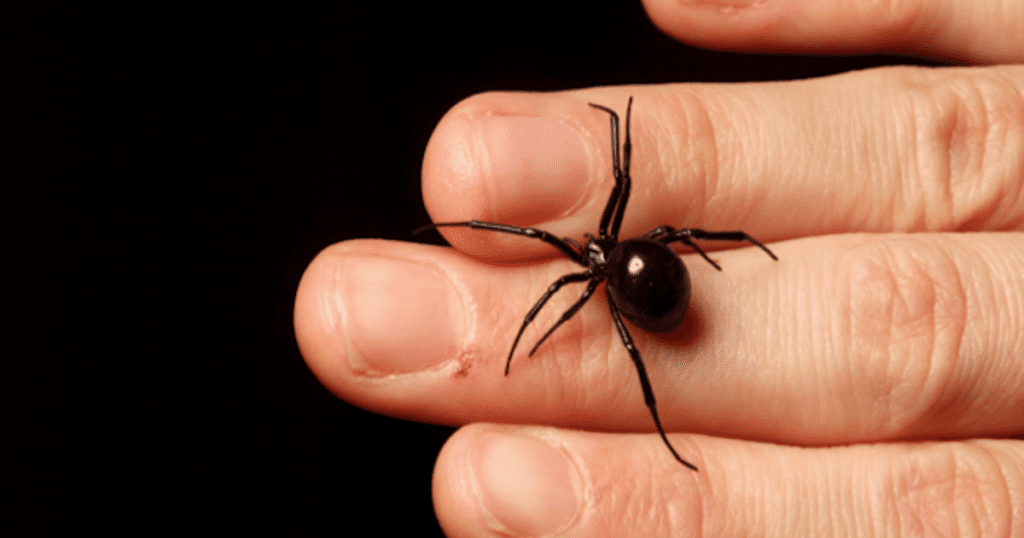Black widow spiders are well-known for the colored, hourglass-shaped mark on their abdomens. Several species respond to the name and can be found in temperate regions worldwide. But did you know how male black widow spiders choose their mates?
To avoid being eaten, male black-widow spiders choose their mates by determining if the female has already eaten.
The Black Widow Spider
The common name for black widow spiders comes from the widespread belief that the female eats the male after mating, a rare occurrence in nature. These spiders are found worldwide, with five species established in the United States, and are best known for the red hourglass shape on the underside of their abdomen. Although fatalities are uncommon, the black widow’s venom is 15 times stronger than that of a rattlesnake and can cause muscle aches, nausea, and difficulty breathing.
Black widow spiders are typically black with two reddish triangular markings on the underside of their abdomen that are usually joined to form a reddish hourglass shape – their most distinguishing feature. Females are sometimes brownish-black. Females are more significant than males, and most black widow spiders are 3 to 10 mm long. Black widow spiders have eight legs and eight simple eyes, two of which are almost touching. (Source: National Geographic)
The Dangerous Mating Ritual
Insects, and male black widow spiders, are the animals most vulnerable to the black widow’s bite. Females occasionally kill and eat their mates after mating, giving rise to the insect’s name. Except during this violent mating ritual, black widows are solitary all year. (Source: National Geographic)
Black Widow’s Venom
The bite of this spider is feared because its venom is said to be 15 times stronger than that of a rattlesnake. Human bites cause muscle aches, nausea, and diaphragmatic paralysis, making breathing difficult; however, contrary to popular belief, most people who are bitten suffer no serious harm, let alone death. However, bites can be fatal, particularly to small children, the elderly, or the infirm. Fortunately, fatalities are relatively rare; the spiders are non-aggressive and bite only in self-defense, such as when someone accidentally sits on them. (Source: National Geographic)
Black Widow’s Web and Feeding
Females suspend a cocoon containing hundreds of eggs in the webs spun by these spiders. Spiderlings disperse shortly after hatching, but the web remains. Black widow spiders use their nets to catch their prey, which includes flies, mosquitoes, grasshoppers, beetles, and caterpillars. Black widow spiders are comb-footed, which means they have bristles on their hind legs that they use to cover their prey with silk after it has been trapped.
To feed, black widows use their fangs to puncture their insect prey and inject digestive enzymes into their corpses. The spiders liquefy their prey’s bodies and suck up the resulting fluid by using these enzymes and their gnashing fangs. (Source: National Geographic)
Black Widow’s Habitat
Black widow spiders prefer dry, dark areas to spin their webs. During the winter, they frequently seek out warm places. Black widow spiders prefer to live in protected areas outside. Under stones and decks, as well as in firewood piles and hollow tree stumps, are examples. Black widows prefer dry man-made structures such as barns, outhouses, henhouses, sheds, meter boxes, brick veneer, barrels, and woodpiles. Black widow spiders hide in sheltered, dimly lit areas, such as garages, basements, and crawl spaces. They prefer cluttered regions that provide more cover for their prey. (Source: National Geographic)
Image from CbsNews
